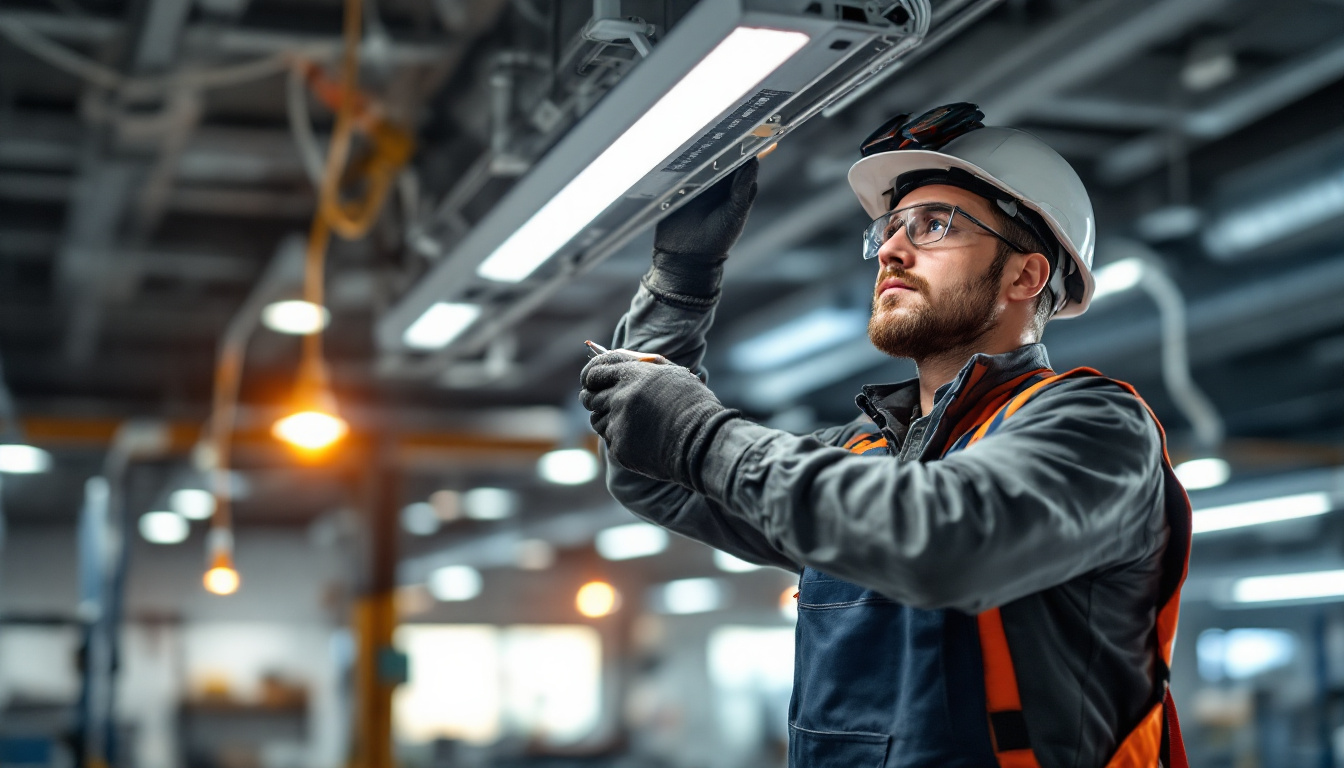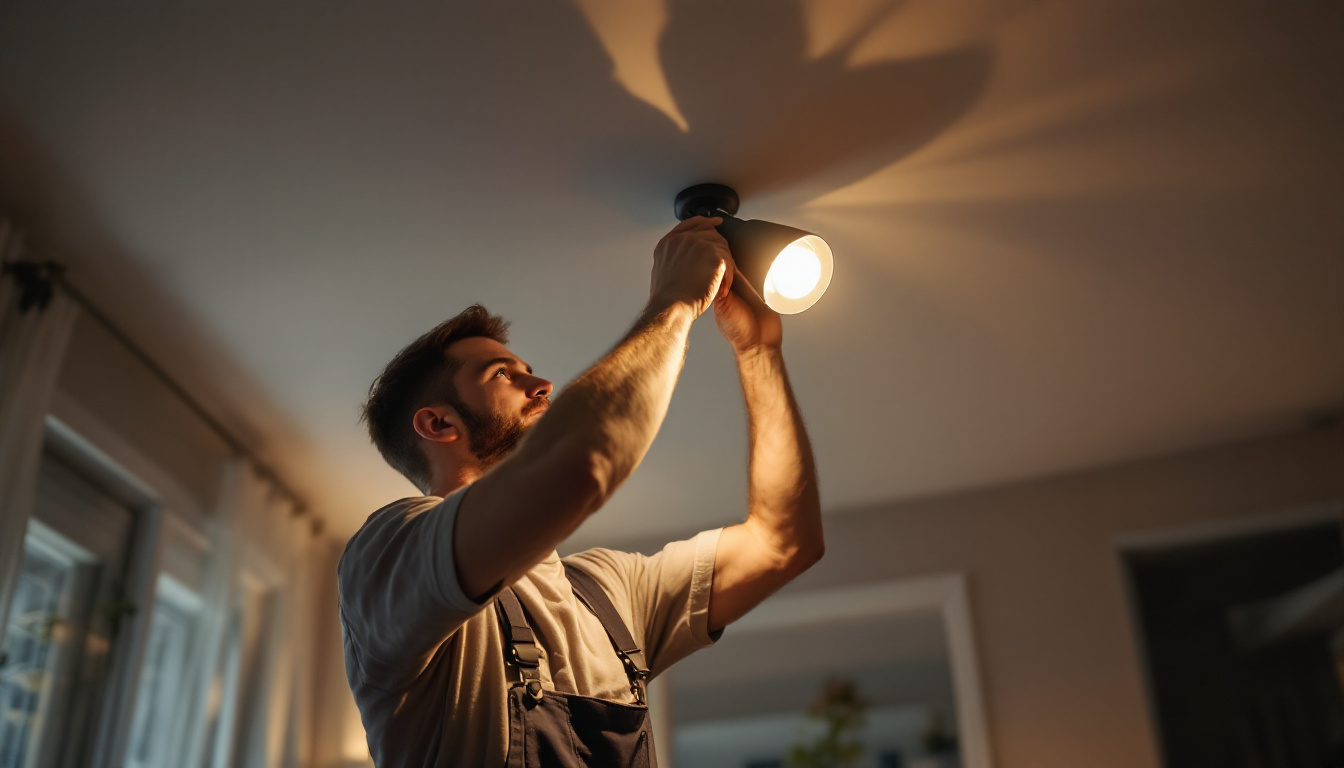
In the world of telecommunications, the term “punch down” often surfaces, especially for professionals involved in wiring and connectivity. For lighting contractors, understanding the punch down process is crucial, particularly when integrating lighting systems with telecommunication infrastructure. This article aims to demystify the punch down technique, providing essential insights and practical tips for lighting contractors.
Punch down refers to the method of connecting wires to a punch down block or a patch panel. This technique is vital for establishing reliable connections in telecommunication systems. The process involves inserting individual wires into slots on a terminal block, where they are then secured by a punch down tool. This method not only streamlines the wiring process but also minimizes the risk of loose connections, which can lead to costly downtime and maintenance.
For lighting contractors, the punch down technique is particularly relevant when dealing with smart lighting systems that require integration with networked devices. Understanding how to perform a punch down can enhance the efficiency and reliability of lighting installations. As smart technology continues to evolve, the ability to seamlessly integrate these systems into existing infrastructure becomes increasingly important, making the punch down technique a valuable skill in the modern contractor’s toolkit.
Integrating lighting systems with telecommunication networks often requires a solid understanding of punch down techniques. As smart lighting solutions become more prevalent, the need for reliable data connections increases. A well-executed punch down can significantly impact the performance and functionality of these systems. For instance, in a commercial setting, where lighting control is often tied to occupancy sensors and building management systems, a faulty connection could disrupt operations and lead to energy inefficiencies.
Moreover, improper connections can lead to issues such as intermittent failures, signal loss, or even complete system outages. Therefore, mastering the punch down technique is essential for ensuring that lighting systems operate smoothly and efficiently. Additionally, as the industry moves toward more complex systems that incorporate IoT devices, understanding the nuances of punch down connections will allow contractors to troubleshoot issues more effectively and provide better service to their clients.
To perform a punch down effectively, certain tools are necessary. The primary tool is a punch down tool, which is designed to insert the wire into the terminal block and trim any excess wire. Some punch down tools come with interchangeable blades, allowing for different types of connections. The choice of blade can affect the quality of the connection, making it essential for contractors to select the right tool for the job.
In addition to the punch down tool, having a wire stripper and a cable tester on hand is beneficial. A wire stripper allows for the precise removal of insulation from the wire, while a cable tester ensures that connections have been made correctly and that the integrity of the signal is intact. Furthermore, a cable management system can also be advantageous, as it helps organize and protect the wiring, reducing the likelihood of tangles and damage during installation. By investing in the right tools and techniques, contractors can ensure that their punch down connections are not only reliable but also maintainable over the long term.
Executing a punch down connection requires attention to detail and a systematic approach. Here’s a step-by-step guide to help lighting contractors perform this task efficiently.
Begin by stripping the insulation from the end of each wire. It’s crucial to leave enough length to ensure a solid connection but not so much that it becomes tangled or messy. Typically, about half an inch of exposed wire is sufficient.
Organize the wires according to the color codes specified for the punch down block. This organization helps maintain clarity and ensures that connections are made correctly. It’s also beneficial to have a reference chart nearby, especially for those who may not be as familiar with the wiring standards. This can serve as a quick guide to verify that the correct colors are being used for each connection, minimizing the risk of errors during the installation process.
Next, insert each wire into the corresponding slot on the punch down block. Ensure that the wire is pushed all the way in to make contact with the metal connector inside the block. This step is vital for establishing a secure and reliable connection.
As you insert the wires, double-check the color codes to avoid any mix-ups. A simple mistake can lead to significant issues down the line, particularly in complex lighting setups. Additionally, consider using a flashlight to illuminate the work area, as good visibility can help you see the slots more clearly and ensure that each wire is properly seated. This attention to detail can save time and effort when troubleshooting potential issues later on.
Once the wires are in place, take the punch down tool and position it over the slot where the wire is inserted. Apply firm pressure to push the wire down into the connector. The tool will also trim any excess wire, ensuring a clean finish.
After completing this step, it’s essential to visually inspect each connection to confirm that the wires are securely fastened and that there are no loose strands. A thorough check can prevent future complications. Furthermore, consider testing each connection with a continuity tester to ensure that the signal is properly transmitted through the wires. This proactive measure can help identify any weak points in the installation before the system is fully operational, allowing for corrections to be made while the setup is still accessible.
Even seasoned professionals can encounter pitfalls when performing punch down connections. Here are some common mistakes to watch out for, along with tips to avoid them.
One of the most frequent errors is placing wires in the wrong slots. This mistake can lead to connectivity issues or even complete system failure. Always refer to the wiring diagram or color code chart to ensure accuracy.
To mitigate this risk, take your time during the insertion process. It’s better to double-check than to rush and make a mistake that could require rework later.
Another common issue is not applying enough pressure with the punch down tool. If the wire isn’t fully seated in the connector, it can lead to intermittent connectivity problems.
When using the punch down tool, ensure that you apply adequate pressure to make a solid connection. A good rule of thumb is to feel for resistance; if the tool is not pushing down firmly, check the alignment of the wire.
After completing the punch down, it’s crucial to test the connections. Skipping this step can lead to undetected issues that may manifest later, causing frustration and delays in project timelines.
Utilizing a cable tester can help identify any connectivity problems before finalizing the installation. This precaution is especially important in complex lighting systems where multiple connections are involved.
To ensure the best outcomes when performing punch down connections, consider implementing the following best practices.
Before starting the punch down process, label each wire according to its function or connection point. This practice not only helps during installation but also aids in future troubleshooting or modifications.
Using color-coded labels can further enhance clarity, making it easier to identify wires quickly. This systemization is particularly beneficial in larger projects with numerous connections.
A tidy workspace contributes to efficiency and reduces the likelihood of errors. Keep tools organized and ensure that wires are neatly arranged. This organization allows for a smoother workflow and minimizes the risk of misplacing tools or components.
Additionally, a clean work area can enhance safety, reducing the chances of accidents that could lead to injuries or damage to equipment.
Telecommunication technology is constantly evolving, and staying updated on the latest techniques and tools is essential. Regular training sessions can help lighting contractors refine their skills and learn about new products or methods.
Investing time in professional development not only enhances individual skills but also contributes to the overall quality of work within the organization. Keeping abreast of industry trends can lead to improved efficiency and better service for clients.
For lighting contractors, understanding how punch down connections integrate with lighting systems is vital. Smart lighting solutions often rely on robust data networks, making punch down techniques even more relevant.
Smart lighting systems utilize various technologies, including Wi-Fi, Zigbee, and Bluetooth, to communicate with other devices. These systems often require reliable data connections to function optimally, making punch down connections essential.
When integrating smart lighting, ensure that the punch down connections are made with high-quality cables and connectors. This attention to detail can significantly impact the performance and reliability of the lighting system.
In many cases, lighting contractors may work alongside IT professionals to ensure that the network infrastructure supports the lighting systems. Understanding the punch down process can facilitate better communication and collaboration between these two fields.
By collaborating effectively, lighting contractors can help ensure that the lighting systems are not only aesthetically pleasing but also functionally sound, providing clients with a seamless experience.
Mastering the punch down technique is an invaluable skill for lighting contractors, particularly as the demand for smart lighting solutions continues to grow. By understanding the process, avoiding common mistakes, and implementing best practices, professionals can ensure that their installations are reliable and efficient.
As the landscape of lighting technology evolves, staying informed and adaptable will be key. Embracing new techniques and tools, including punch down connections, will empower lighting contractors to deliver exceptional results for their clients.
Now that you’re equipped with the knowledge of punch down techniques, take the next step in enhancing your lighting installations with LumenWholesale. Our extensive selection of spec-grade lighting products is designed to meet the highest industry standards, ensuring that your smart lighting solutions are not only innovative but also reliable and efficient. Benefit from our unbeatable wholesale prices and free shipping on bulk orders, making your purchases straightforward and economical. Discover the best value in wholesale lighting and elevate your projects with the quality, affordability, and convenience that LumenWholesale offers.

Discover expert tips and insights for lighting contractors on installing motion-sensitive light switches.

Discover essential insights into light switches that every lighting contractor should know.

Discover essential tips and expert advice for lighting contractors on electrical ballast replacement.

Discover essential tips and expert advice for lighting contractors on mastering ceiling mounted lights.